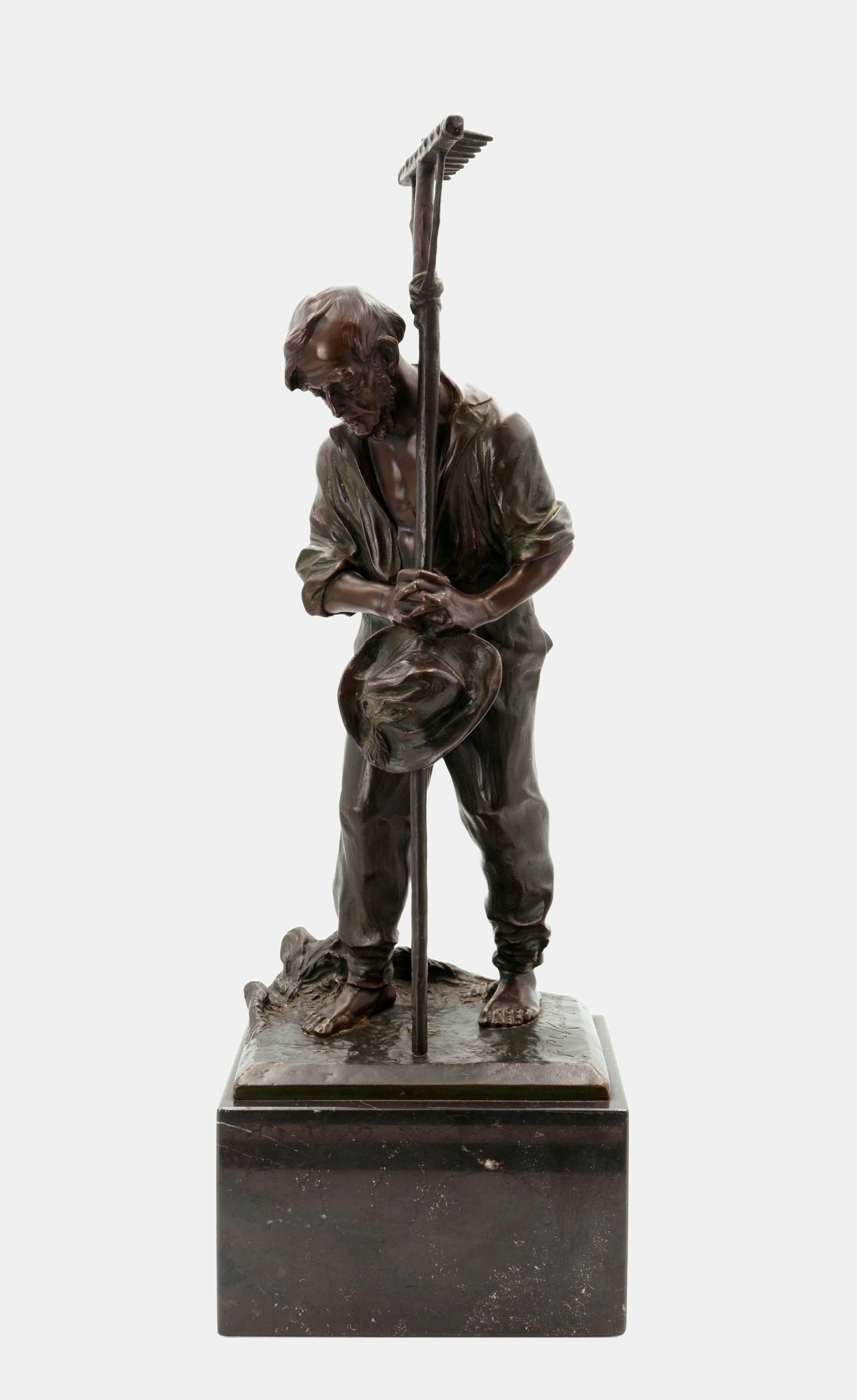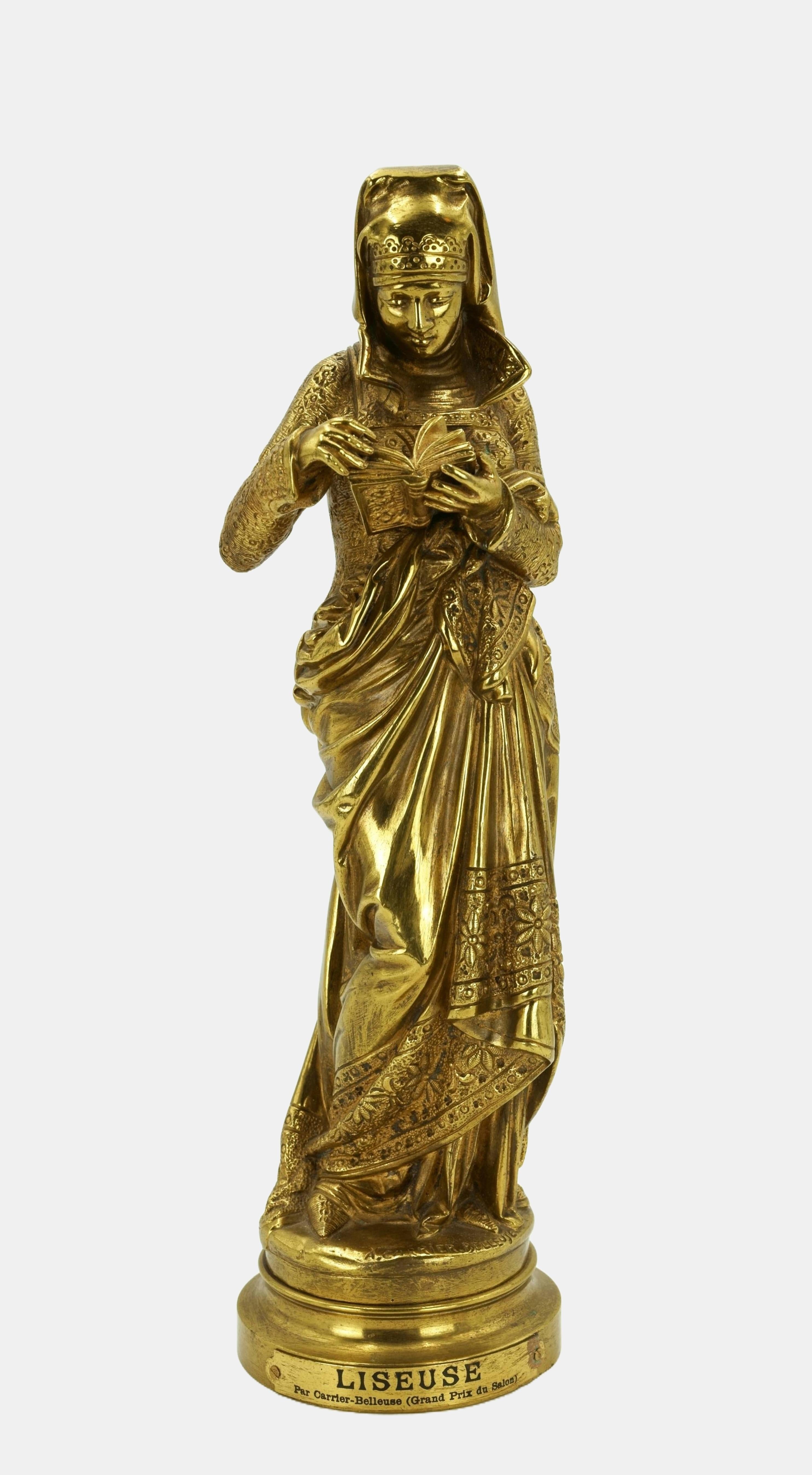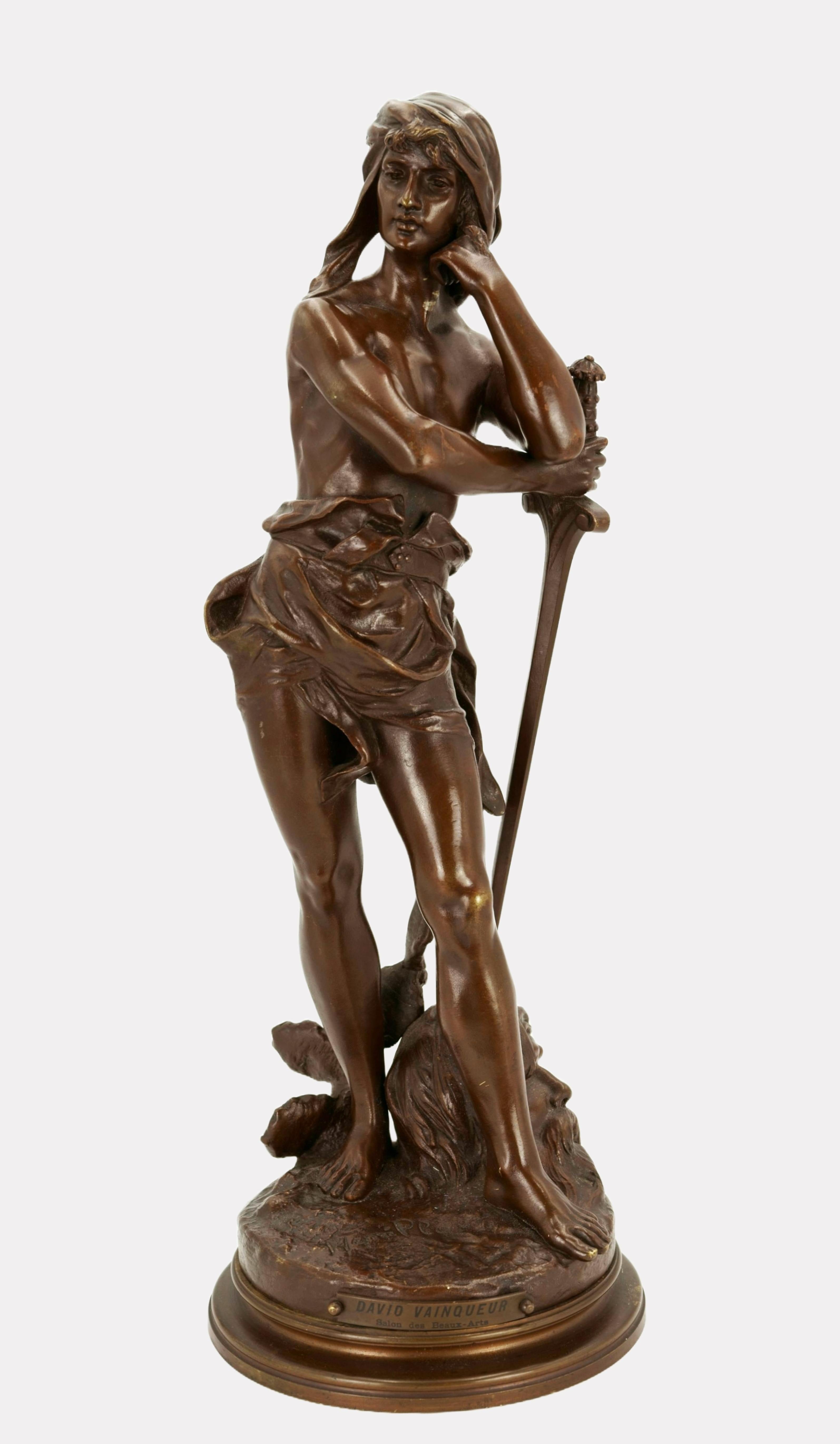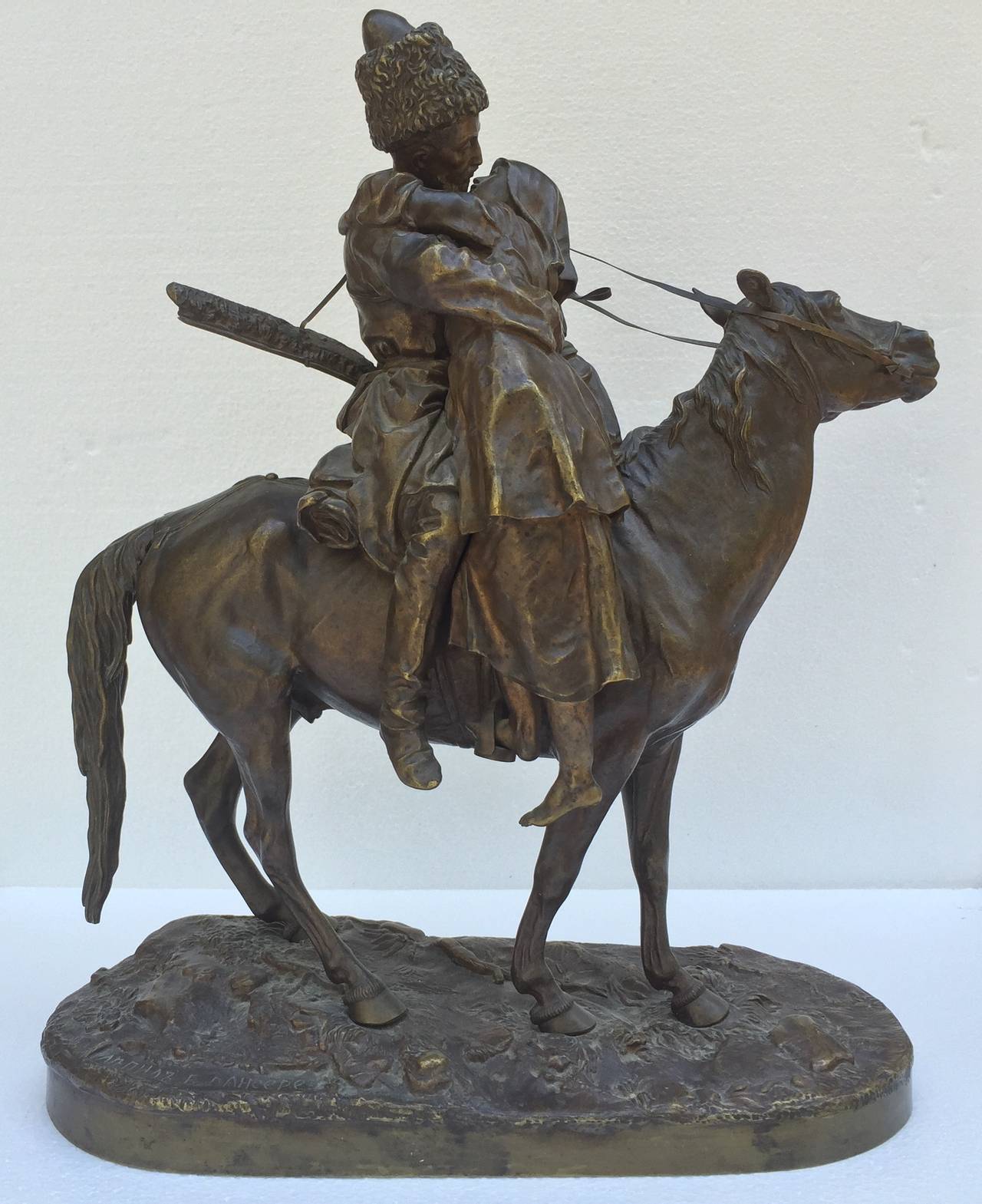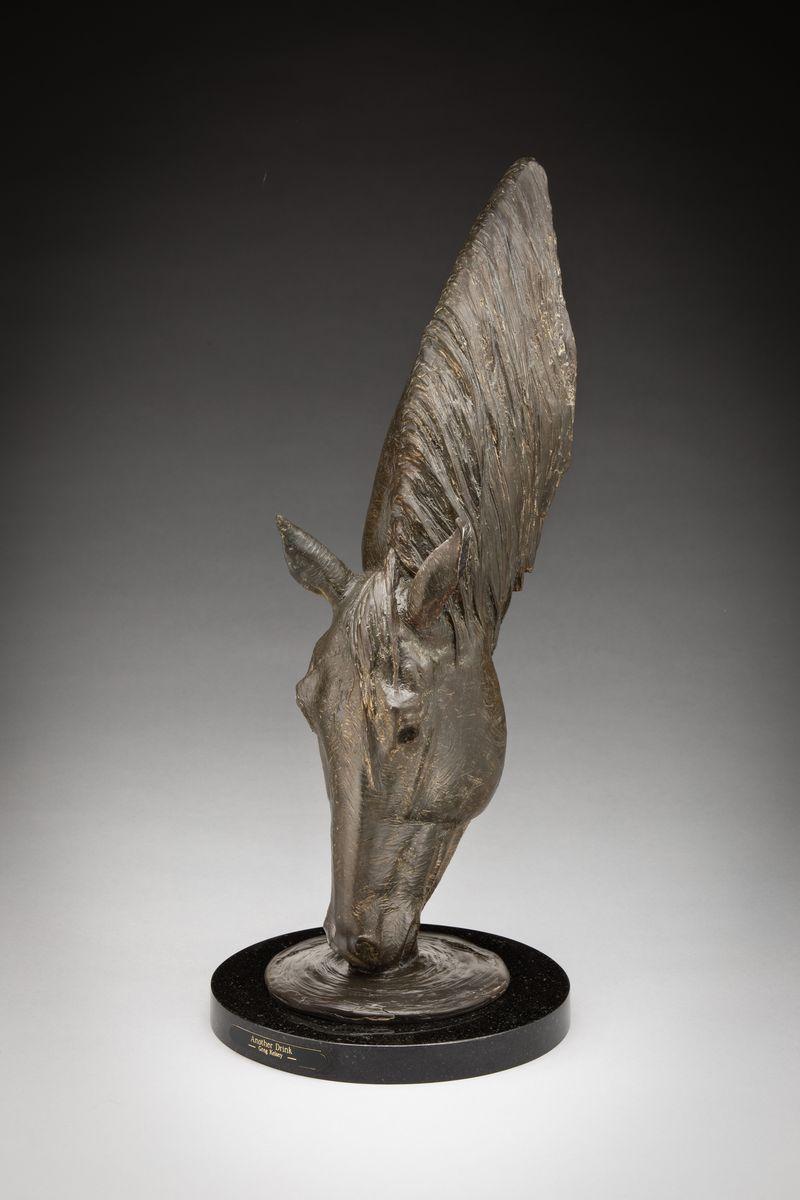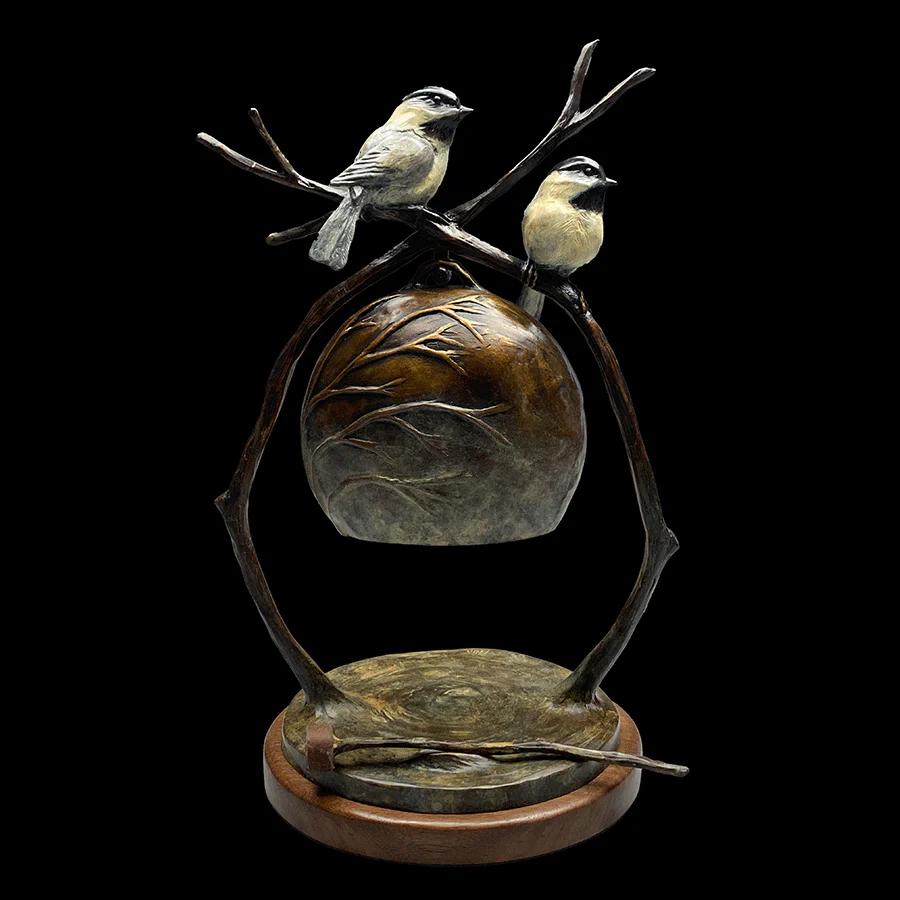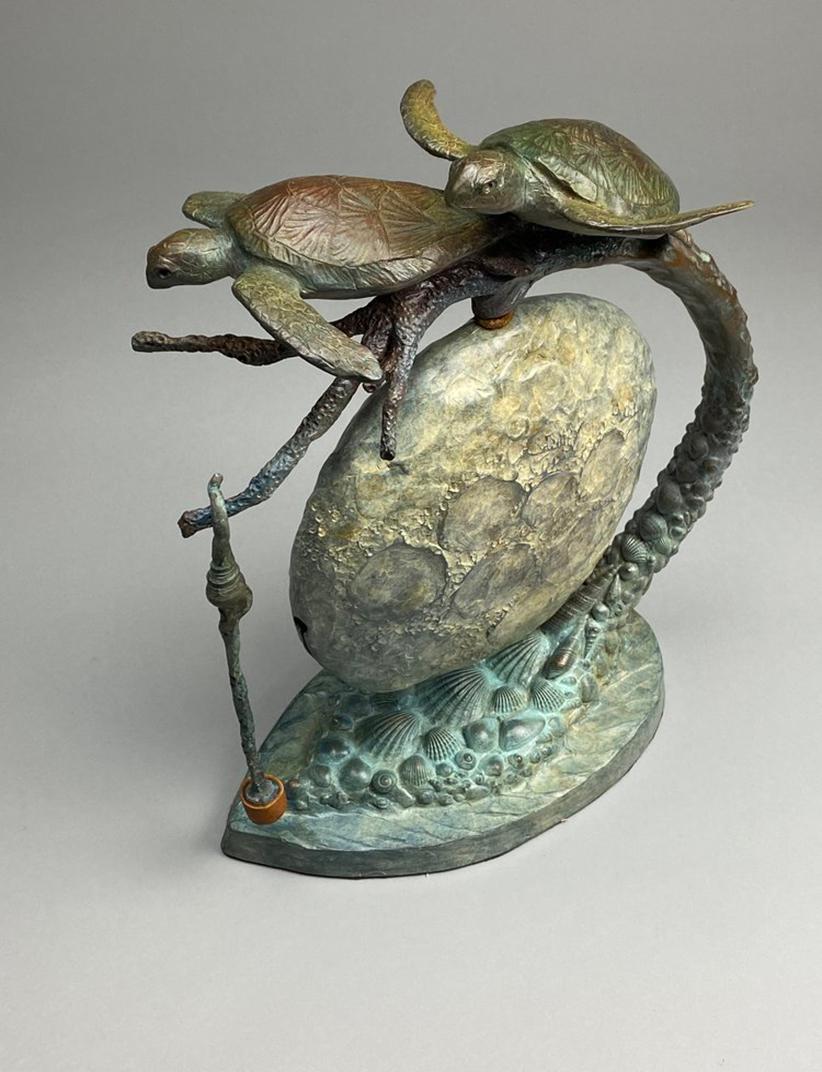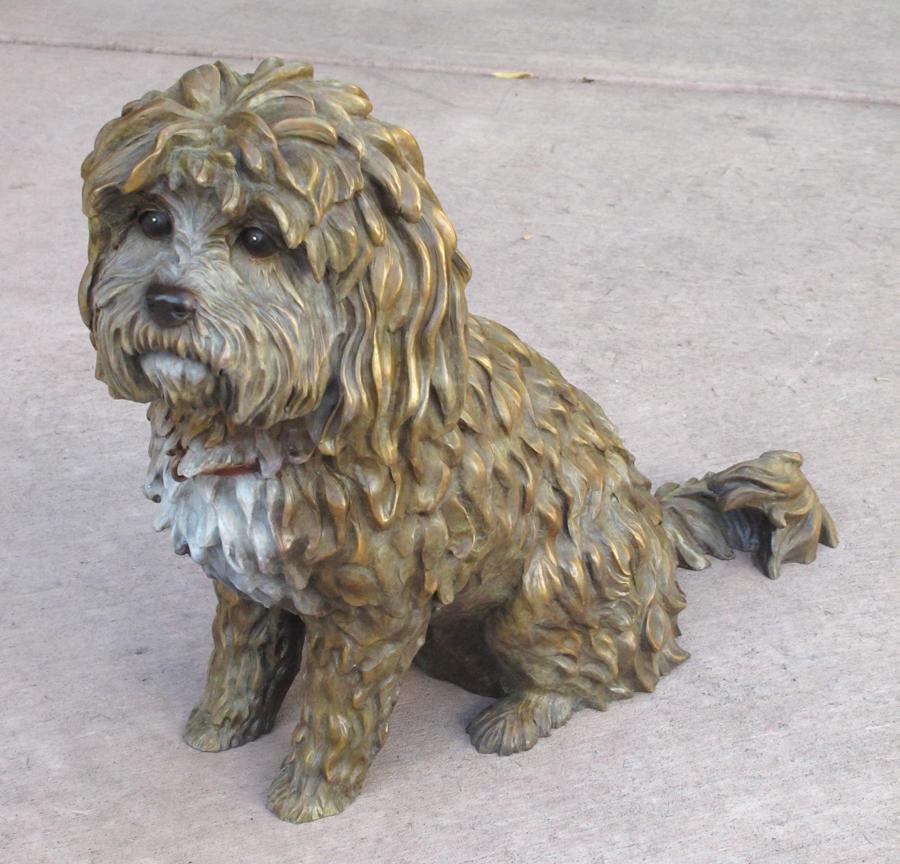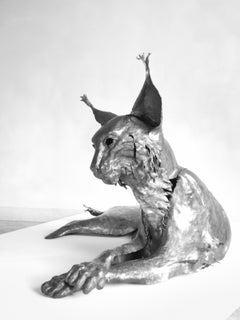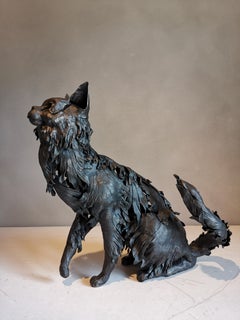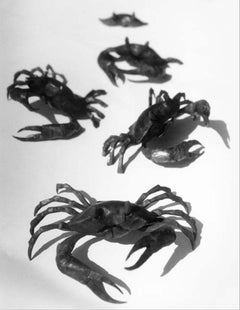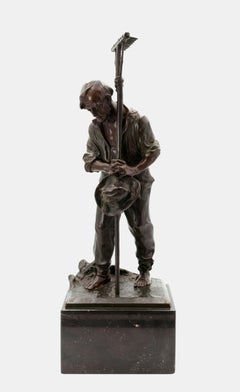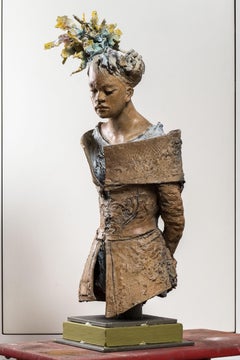
Young Lady portrait bronze sculpture - Italian contemporary outdoor realist
View Similar Items
Video Loading
Want more images or videos?
Request additional images or videos from the seller
1 of 10
Ugo RivaYoung Lady portrait bronze sculpture - Italian contemporary outdoor realist2018
2018
About the Item
About the Seller
5.0
Recognized Seller
These prestigious sellers are industry leaders and represent the highest echelon for item quality and design.
Established in 1950
1stDibs seller since 2016
25 sales on 1stDibs
Authenticity Guarantee
In the unlikely event there’s an issue with an item’s authenticity, contact us within 1 year for a full refund. DetailsMoney-Back Guarantee
If your item is not as described, is damaged in transit, or does not arrive, contact us within 7 days for a full refund. Details24-Hour Cancellation
You have a 24-hour grace period in which to reconsider your purchase, with no questions asked.Vetted Professional Sellers
Our world-class sellers must adhere to strict standards for service and quality, maintaining the integrity of our listings.Price-Match Guarantee
If you find that a seller listed the same item for a lower price elsewhere, we’ll match it.Trusted Global Delivery
Our best-in-class carrier network provides specialized shipping options worldwide, including custom delivery.More From This Seller
View AllLynx inside and outdoor sculpture unique black wrough iron feline cat natural
By Ivan Zanoni
Located in Milan, IT
The sculpture is a unique, unrepeatable piece. Can be an outdoor sculpture.
The Lynx belongs to the cycle dedicated to local animals that the sculptor has been working on.
The artwork has just been exhibited in the prestigious museum in Rovereto, the Mart, Italy's leading museum of modern and contemporary art.
It has been created with a technique that the artist has perfected over his long experience. Furthermore, he learnt a few technical skills from his father, a sculptor of wrought iron too. A few artworks made by father and son are in significant private and public collections, the best known of which is the Melinda and Bill Gates...
Category
2010s Realist Figurative Sculptures
Materials
Iron
Cat forged crafted in black wrough iron. Unique. In and outdoor fine sculpture
By Ivan Zanoni
Located in Milan, IT
An exquisite and highly tasteful sculpture, The Cat is one of the most recent artworks by the Italian master blacksmith Ivan Zanoni who has recently been put on display at MART, Museum of Modern Art in Rovereto (the most prominent in Italy), which has dedicated a significant exhibition to him.
Ivan Zanoni has learned this rare activity from his father, Luciano, who, among other artworks, has sculpted a four-meter olive tree for Melinda and Bill Gates...
Category
2010s Realist Figurative Sculptures
Materials
Iron
Two meters pear tree wrough iron sculpture. Unique piece. In & outdoor sculpture
By Ivan Zanoni
Located in Milan, IT
Pear Tree Sculpture.
Elegant, fine and unique piece, not replicable. Forged on wrought iron. Made by six different branches, easy assembled.
The sculptor is fresh from the success ...
Category
2010s Realist Figurative Sculptures
Materials
Iron
The march of the crabs, series of wrought-iron sculptures by Italian blacksmith
By Ivan Zanoni
Located in Milan, IT
Ivan Zanoni's expert craftsmanship shows us this composition of 5 handmade and unique sculptures that provide the effect of watching crabs emerge from the sea.
The measure written a...
Category
2010s Realist Figurative Sculptures
Materials
Iron
Design made in Italy duckboard bar cabinet in marple wood, fine details
Located in Milan, IT
The sideboard made by experienced contemporary Italian cabinetmakers is made of solid maple. Every finish is taken care of down to the smallest detail, from the duckboard on the four...
Category
2010s Realist Figurative Sculptures
Materials
Wood
Almost one meter diameter sphere bronze Bee Hive - unique outdoor sculpture
Located in Milan, IT
Bronze sculpture by the Italian-American sculptor Jessica Carroll
Diameter cm 80 + iron base, kg 110 (pure bronze).
Jessica Carroll's elegant and uni...
Category
2010s Naturalistic Figurative Sculptures
Materials
Bronze
You May Also Like
In the Rough
Located in Colorado Springs, CO
Original bronze sculpture by E.C. Wynne.
Edition #110/125.
Signed on bronze.
Category
21st Century and Contemporary Realist Sculptures
Materials
Bronze
Field worker with rake / - The Humility of the Farm Worker -
Located in Berlin, DE
Paul Ludwig Kowalczewski (1865 Mieltschin - 1910 Berlin), Field worker with rake, around 1900. Brown and brown-greenish patinated bronze with cast naturalistic plinth mounted on a wh...
Category
Early 1900s Realist Figurative Sculptures
Materials
Bronze
$1,490 Sale Price
20% Off
Reading Woman / - The golden glow of imagination -
By Albert-Ernest Carrier-Belleuse
Located in Berlin, DE
Albert-Ernest Carrier-Belleuse (1824 Anizy-le-Château - 1887 Sèvres), Reading Woman, around 1880. Polished bronze mounted on a cast base. 33 cm (total height) x 9 cm (length) x 9 cm ...
Category
1880s Realist Figurative Sculptures
Materials
Bronze
$2,235 Sale Price
20% Off
The Victorious David / - The melancholy of the radiant hero -
Located in Berlin, DE
Henri Honoré Plé (1853 Paris - 1922 Paris), The Victorious David, around1890. Red-brown and brown patinated bronze with terrain plinth mounted on a round base. 42 cm (total height) x...
Category
1890s Realist Figurative Sculptures
Materials
Bronze
$1,770 Sale Price
20% Off
Joan of Arc / - The Liberating Power of Faith -
Located in Berlin, DE
Eugène Laurent (1832 Gray - 1898 Paris), Joan of Arc, around 1880. Brown patinated bronze on a cast rectangular plinth with tree trunk and distaff. 40 cm (height) x 15.5 cm (length) x 15.5 cm (depth), weight 6.1 kg. Signed “E.[ugène] Laurent.” on the plinth and inscribed “HZ” on the reverse.
- somewhat stained due to patina, traces of oxidation behind the distaff, slightly rubbed in places, overall still in very good condition for its age
- The Liberating Power of Faith -
At the age of 13, Jeanne, a peasant girl born in Lorraine around 1412, heard the voices of Saints Catherine and Margaret and the Archangel Michael telling her that she had been chosen to liberate France from English occupation. By 1428, Henry VI's troops had advanced to the Loire and besieged Orléans, a strategic city for the further conquest of France. Joan of Arc went to the exile of Charles VII and, with the king's consent, led the French army into battle against the besiegers. After four days of fighting, the English were defeated and Orléans was liberated. Other victorious battles followed, until in 1430 she fell into the hands of the enemy, who had her executed as a witch by the Inquisition. In May 1431, Joan of Arc was burned at Rouen.
After the final expulsion of the English, the "Maid of Orleans" was rehabilitated by the Church in 1456. She was finally canonized in 1920. By then, Joan of Arc had become a national heroine and the patron saint of France. After the French Revolution, the strengthening of the nation-state and the Franco-Prussian War of 1870-71, Joan of Arc was again venerated and depicted in numerous bronze statues.
Eugène Laurent depicts the young girl listening to the voices of the saints who reveal her destiny. With her eyes wide open, she gazes at the sky as if she were looking at the revealed future. Her hands are clasped in prayer, indicating her willingness to face her destiny. Leaning against a tree trunk, she treads with one foot on a raised stone, which, together with her upward gaze, gives her an upward movement that announces her higher mission. At the same time, however, she steps down from the stone to the earth, emphasizing her earthly mission, for which she has already taken the first step. In doing so, she steps over the discarded distaff, which refers to her "lower" origins and belongs to the life she has now left behind.
Laurent manages to capture the fateful emotion that makes us look at Joan of Arc in awe, even though she is a simple peasant girl. Even if the design is aimed at the overall impression, the artist has nevertheless worked out certain details, such as the tied waistcoat, very realistically and, in addition to the skin, has particularly depicted the material quality of the textiles.
About the artist
Eugène Laurent studied at the École des Beaux-Arts in Paris, where he won a prize in 1860. He then joined the studio of Jacques Antoine Theodore Coinchon. As a freelance artist, he supplied the Paris Salon with statues, portrait busts, and medallions from 1861 to 1893. He also created large sculptures such as the monument to Jacques Callot in Nancy (1877) and the statue of François Boucher at the Paris City Hall.
GERMAN VERSION
Eugène Laurent (1832 Gray - 1898 Paris), Jeanne d’Arc, um 1880. Braun patinierte Bronze auf mitgegossener rechteckiger Plinthe mit Baumstamm und Spinnrocken. 40 cm (Höhe) x 15,5 cm (Länge) x 15,5, cm (Tiefe), Gewicht 6,1 kg. Auf der Plinthe mit „E.[ugène] Laurent.“ signiert und rückseitig mit „HZ“ bezeichnet.
- patinabedingt etwas fleckig, Oxidationsspuren hinter dem Spinnrocken, stellenweise leicht berieben, insgesamt in einem altersgemäß noch sehr guten Zustand
- Die befreiende Kraft des Glaubens -
Als 13jähige vernahm das um 1412 in Lothringen geborene Bauernmädchen Jeanne Stimmen der Heiligen Katharina und Margarete und des Erzengels Michael, die ihr verkündeten, auserwählt zu sein, Frankreich von der englischen Besatzung zu befreien. 1428 waren die Truppen von Heinrich VI. bis zur Loire vorgerückt und belagerten die für eine Weitereroberung Frankreichs strategisch wichtige Stadt Orléans. Jeanne d’Arc begab sich ins Exil Karls VII. und führte mit der Einwilligung des Königs das französische Heer gegen die Belagerer ins Feld. Nach viertätiger Schlacht unterlagen die Engländer und Orléans war befreit. Es folgten weitere siegreiche Kämpfen bis sie 1430 in die Hände des Feindes fiel, der bei der Inquisition ihre Hinrichtung als Hexe erwirkte. Im Mai 1431 wurde Jeanne d’Arc in Rouen verbrannt.
Im Anschluss an die endgültige Vertreibung der Engländer wurde die „Jungfrau von Orléans“ 1456 von der Kirche rehabilitiert. 1920 erfolgte schließlich ihre Heiligsprechung. Inzwischen galt Jeanne d’Arc als Nationalheldin und Schutzpatronin Frankreichs. In der Nachfolge der Französischen Revolution, dem Erstarken der Nationalstaatlichkeit und dem Deutsch-Französischen Krieg von 1870/71 erfuhr Jeanne d‘Art eine neue Verehrung und wurde in zahlreichen Bronzestatuen dargestellt.
Eugène Laurent zeigt das junge Mädchen wie sie die Stimmen der Heiligen vernimmt, die ihr das von der Vorsehung bestimmte Schicksal offenbaren. Mit weit geöffneten Augen blickt sie gen Himmel als ob sie die offenbarte Zukunft schauen würde. Dabei hat sie die Hände in Gebetshaltung geschlossen, was zugleich vom Willen kündet, sich ihrem Schicksal zu stellen. An einen Baumstamm gelehnt, tritt sie mit dem einen Fuß auf einen erhöhten Stein, was ihr – zusammen mit dem aufwärts gerichteten Blick – eine von ihrer höheren Mission kündende Aufwärtsbewegung verleiht. Zugleich tritt sie aber auch von dem Stein auf die Erde herab, wodurch ihre irdische Mission hervorgehoben wird, zu der sie bereits den ersten Schritt getan hat. Dabei steigt sie über den abgelegten Spinnrocken hinweg, der auf ihre ‚niedere‘ Herkunft verweist und zum nun abgelegten Leben gehört.
Laurent gelingt es, die schicksalhafte Ergriffenheit zur Darstellung zu bringen, die uns Jeanne d‘Arc, obwohl sie ein einfaches Bauernmädchen ist, ehrfürchtig betrachten lässt. Auch wenn die Gestaltung auf den Gesamteindruck zielt, hat der Künstler doch einzelne Details, wie die zugebundene Weste, äußerst realitätsnah herausgearbeitet und neben der Haut insbesondere die stoffliche Qualität der Textilien zur Darstellung gebracht.
zum Künstler
Eugène Laurent studierte an der Pariser École des Beaux-Arts und wurde 1860 von der Akademie mit einem Preis ausgezeichnet. Anschließend trat er in das Atelier Jacques Antoine Theodore Coinchon ein. Als freischaffender Künstler beschickte er von 1861 bis 1893 den Pariser Salon mit Statuen, Porträtbüsten und Medaillons. Zudem schuf er Großplastiken wie das Denkmal Jacques Callots in Nancy (1877) und die Statue...
Category
1890s Realist Figurative Sculptures
Materials
Bronze
$1,117 Sale Price
20% Off
The Victorious David / - The melancholy of the radiant hero -
Located in Berlin, DE
Henri Honoré Plé (1853 Paris - 1922 Paris), The Victorious David, around 1890. Red-brown and brown patinated bronze with terrain plinth mounted on a round base. 62 cm (total height) ...
Category
1890s Realist Figurative Sculptures
Materials
Bronze
$3,912 Sale Price
20% Off
